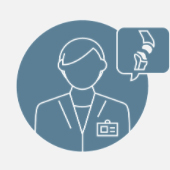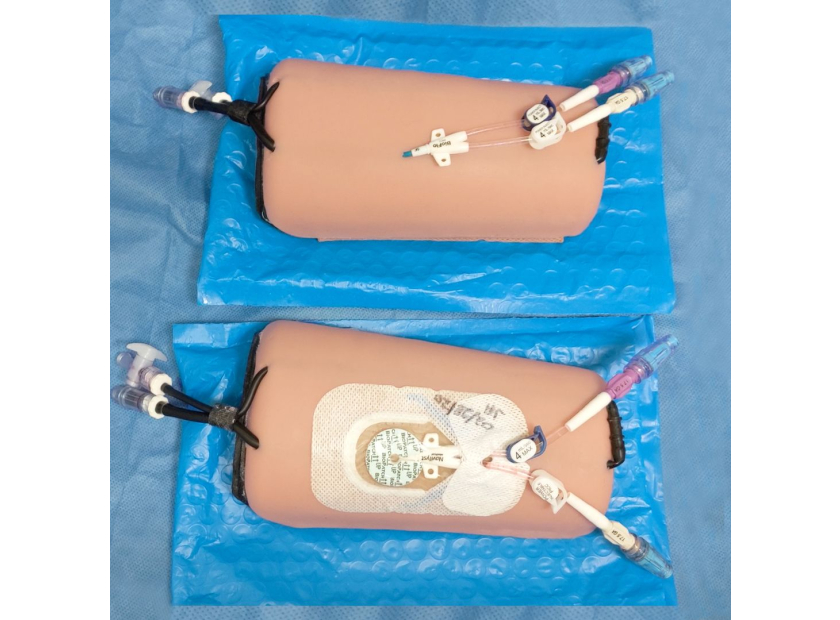How Clinical Skill Training Equipment Like Workshop Models Can Build Competencies Faster
There’s a precise moment an inexperienced medical trainee must learn to identify as they master the core clinical skill of catheter insertion—the first chamber of the needle will “flash” with blood during the initial insertion, a signal to immediately stop all subcutaneous forward progress. This is a critical moment during a delicate procedure, and like dozens of other core medical skills, it’s one that must become routine in order for any specialist to master their profession.
It takes repetition of the hands-on act of insertion to build confidence in identifying and correctly responding to this “flash,” which is why clinical skill training equipment that can authentically recreate crucial events is of great value to medical instructors. Modern medical training equipment has progressed so far in design that it’s now possible to create specialized models that give students hands-on experience in a plethora of core skills.
Authentic, Responsive, Effective Training Models
One of the leading pieces of clinical skill training equipment used to teach catheter insertion is the RediStik wearable PIV trainer. As the name suggests, this lifelike recreation of skin and subcutaneous tissue can be fitted to a human arm and recreate the real-world physical proximities and personal interaction a physician will encounter when performing the procedure on a patient. By placing the equipment on a colleague or instructor, a student gets a lesson in basic bedside manner as well as the finer points of the procedure. And, the model is realistic and responsive enough to give the student a convincing and effective training experience.
As can be seen in this demonstration from the Texas Children’s Hospital, the model can be filled with red liquid to authentically recreate all the stages of a saline flush, including visualization, palpation, and puncture of the vein leading to that all-important blood “flash” confirmation. The student can use the model to repeatedly complete the task of threading the catheter into the intravascular space, confident that this experience is authentic enough to translate to clinical settings.
The realism, repeatability, and standardization of such clinical skill training equipment, especially that which can be undertaken in a broader medical presentation simulation, is what allows it to build core competencies faster.
Training Equipment that Works
The effectiveness of the most advanced clinical skill training equipment was also highlighted by recent research undertaken in Australia. Researchers found that resident medical officers demonstrated significantly better performance in cardiac arrest interventions in response to acute deterioration of a patient when they had been exposed to training with automated models rather than solely instructor feedback.
The results suggest that training with automated models is a cost-effective way to decrease the training burden on instructors while still improving skill acquisition. These findings also support other research that has found the use of highly detailed simulation models can effectively transfer skills from non-clinical to operating room settings. These models have been shown to improve operation times, improve triangulation of devices such as arthroscopes, and reduce errors. Moreover, such models can be produced to support hands-on experiential instruction in any medical field.
It’s the Materials that Matter
The key to the success of clinical skill training equipment is the advanced materials and dynamic features of their composition. The RediStik line of products, for example, has textured fabrics that authentically recreate the feel, sealing qualities, and performance of human skin and the underlying tissues. These materials provide students with insightful experiences that limit the gap between simulated and real-world patients. Furthermore, the model can be infused with simulated blood that will perform under pressure and puncture just as it would in a living patient.
These specific features are examples of a broader range of medical education model properties that can be applied in combination to recreate any core procedural skill, from the basics of suturing, to the complexities of lumbar vertebrae dura repair.
Leading features and concepts include:
Buildability |
Training models are no longer single-use or single purpose. Today’s leading engineers are creating equipment that can be expanded to evolve with the increasing experience and skills of a cohort. |
Composite materials |
The authentic skin texture and performance of the RediStik trainer is repeated in other models recreating human bone, joints, muscles, vertebrae, and more. |
Dual Usage models |
Training models can be created to accommodate a range of potential surgical interventions, increasing the complexity of tasks and the skills of students. A single model can be accessed in both an open or closed fashion to highlight the competing advantages of keyhole or intensive interventions. |
Haptic feedback |
Flowing blood isn’t the only responsive element to modern training models. Training kits can be fitted with haptic feedback sensors that produce noise upon contact with surgical tools, thereby encouraging accuracy and introducing consequences to training actions. |
Radiopaque materials |
Bones, organs, and joints can be built from radiopaque materials that block x-rays and effectively recreate the need for and performance of diagnostic imaging techniques. As with the other cutting-edge materials and concepts above, radiopaque materials can be the central focus of a clinical training tool or one of several features that effectively recreate the complexities and challenges of clinical performance. |
These features are the tools of leading medical training equipment designers and manufacturers, but they serve the practical purpose of exposing trainees to the realities of professional service without the cost, dangers, and ethical considerations of using cadavers or relying on clinical supervision.
As the research suggests, this advanced clinical skill training equipment could potentially become the best way to teach students the vital details and indicators that define successful patient outcomes.
Clinical Skill Training Equipment that Works
The tiny “flash” of successful catheter insertion is the kind of key detail that defines the effectiveness of equipment designed to teach core clinical skills. The fact that the equipment in use can be fitted to a human arm adds a further layer of realism that should help build core competencies faster.
The techniques, technologies, and practical applications of today’s best medical training equipment leaves instructors in an enviable situation in comparison to their predecessors, and the ability for leading equipment designers to create custom materials to scale means anything that hasn’t already been created is only a discussion away from reality.
Sawbones produces a wide range of medical education models to support training across a range of specialties. For more information, contact us at 206-463-5551.

If you're seeking something you can't find on our website, our sales team is happy to help. We can either direct you to the right model or provide a free quote on the right custom project to meet your needs. Discover options with our clear bone models, laminated blocks, custom displays, or other machining projects.








